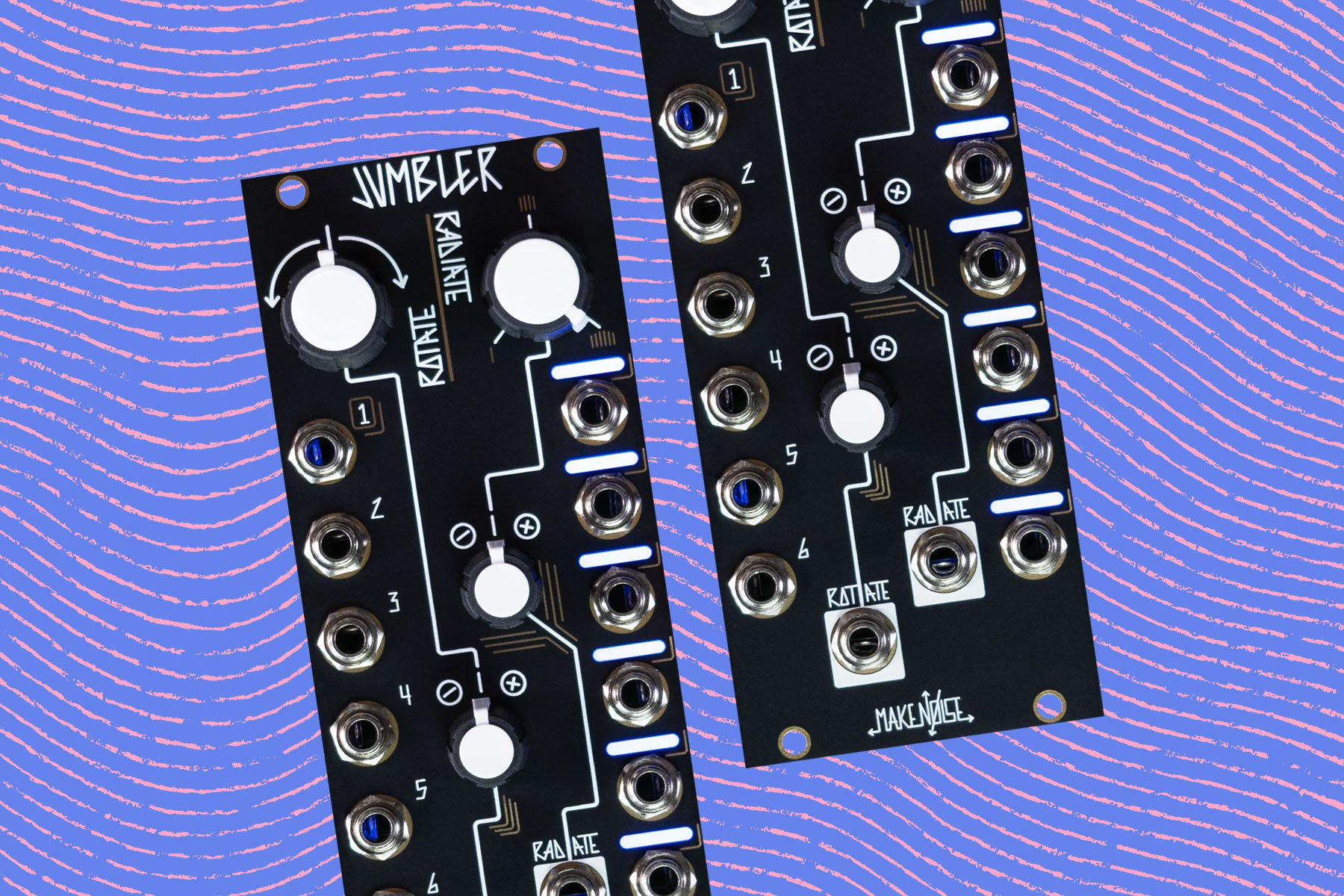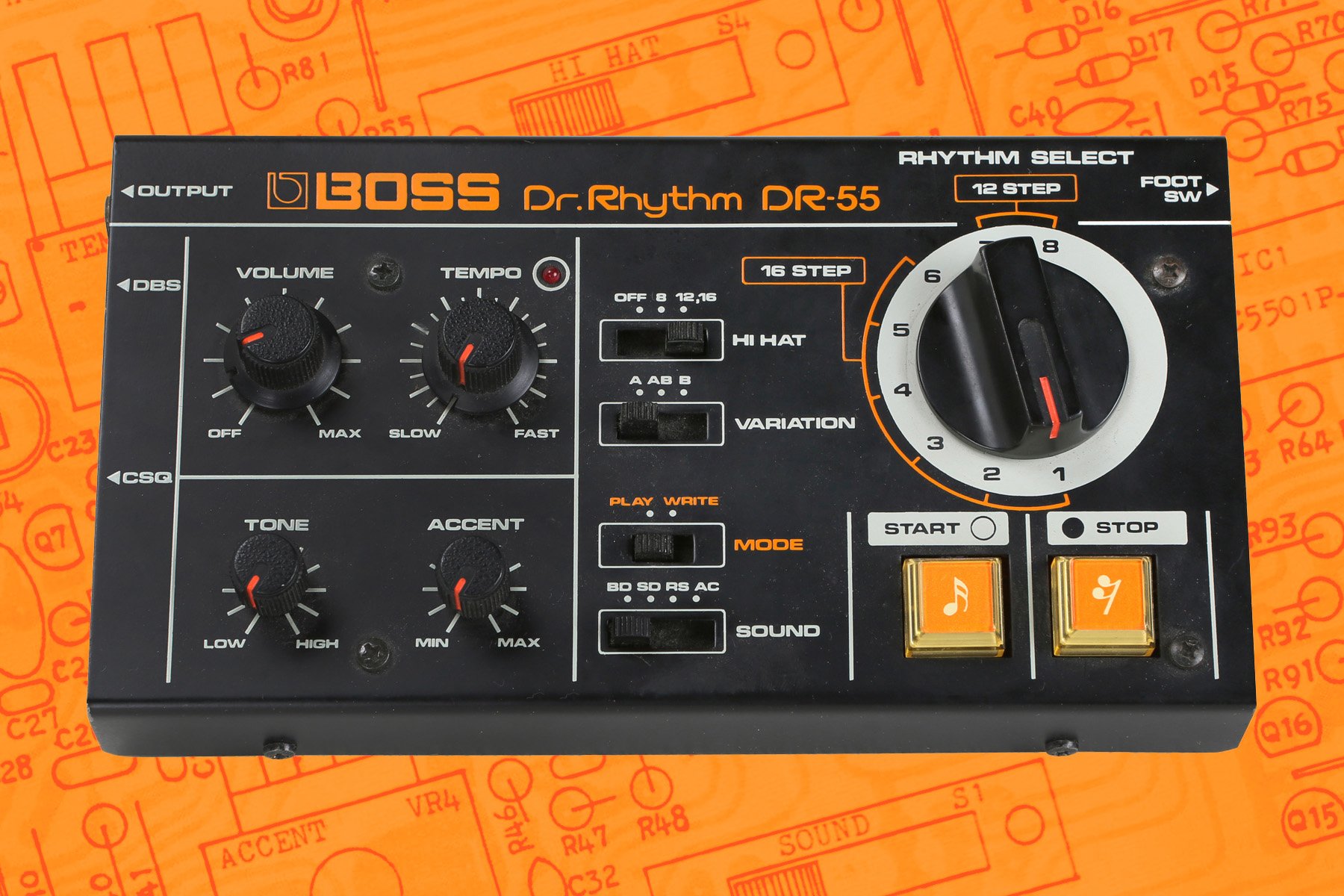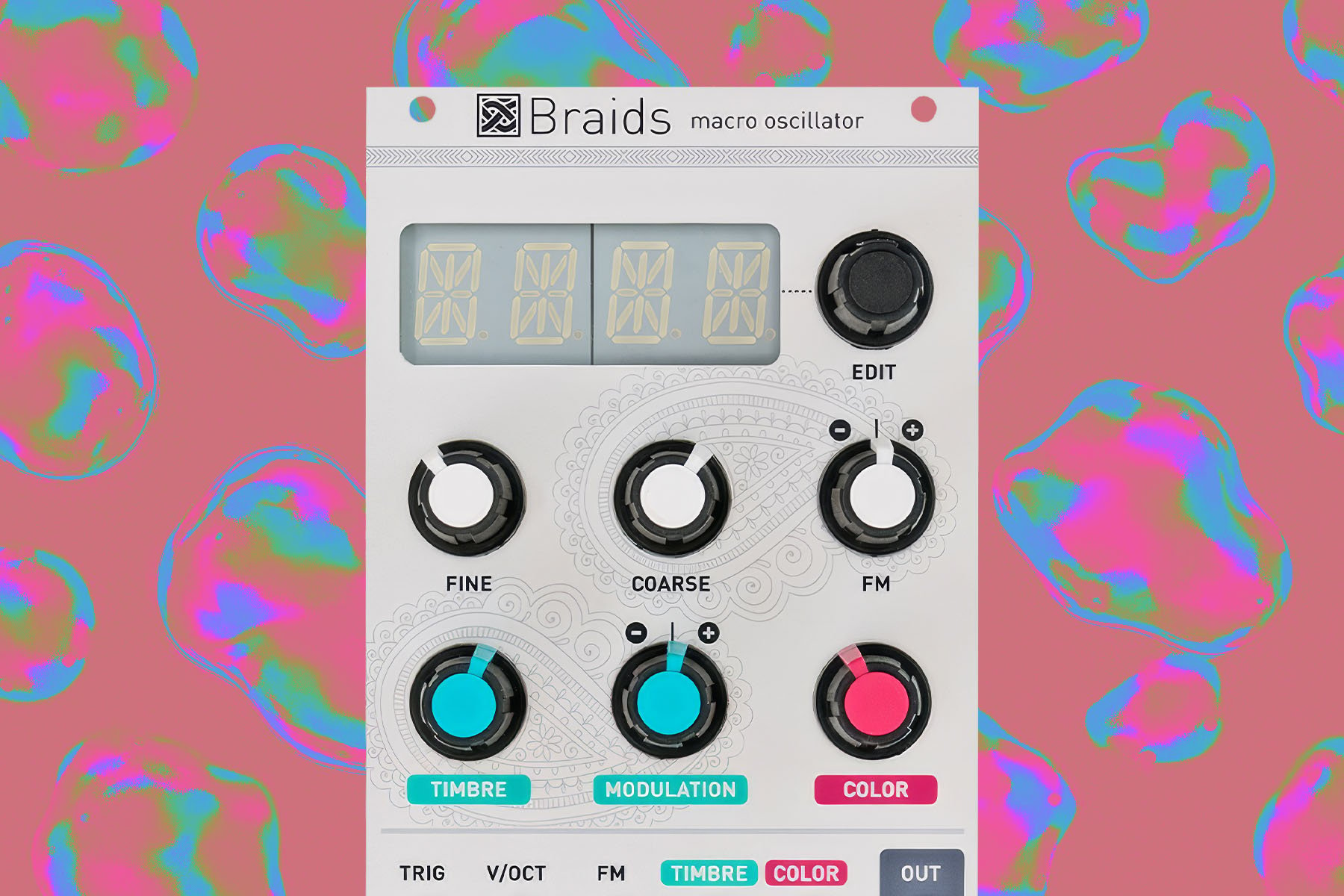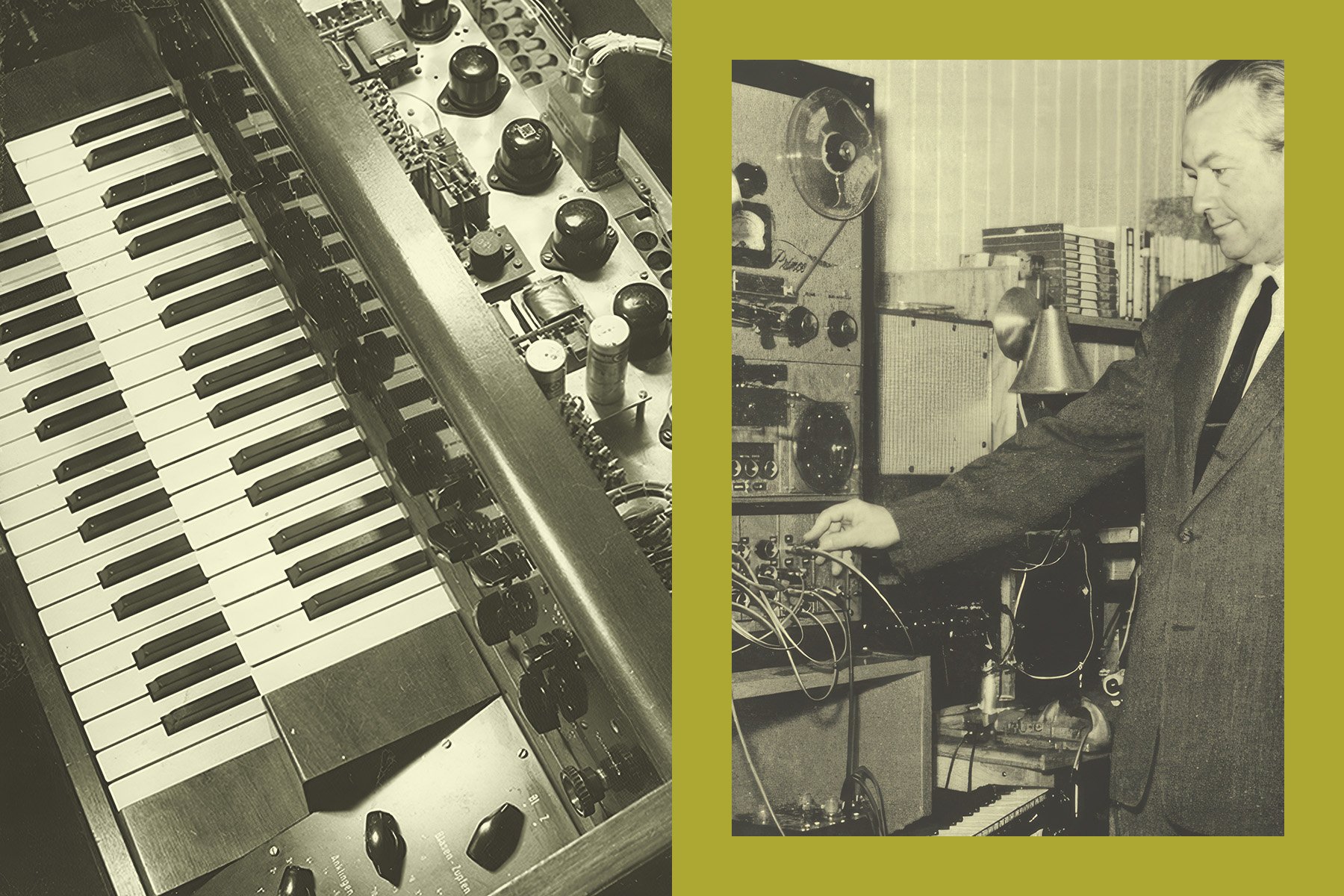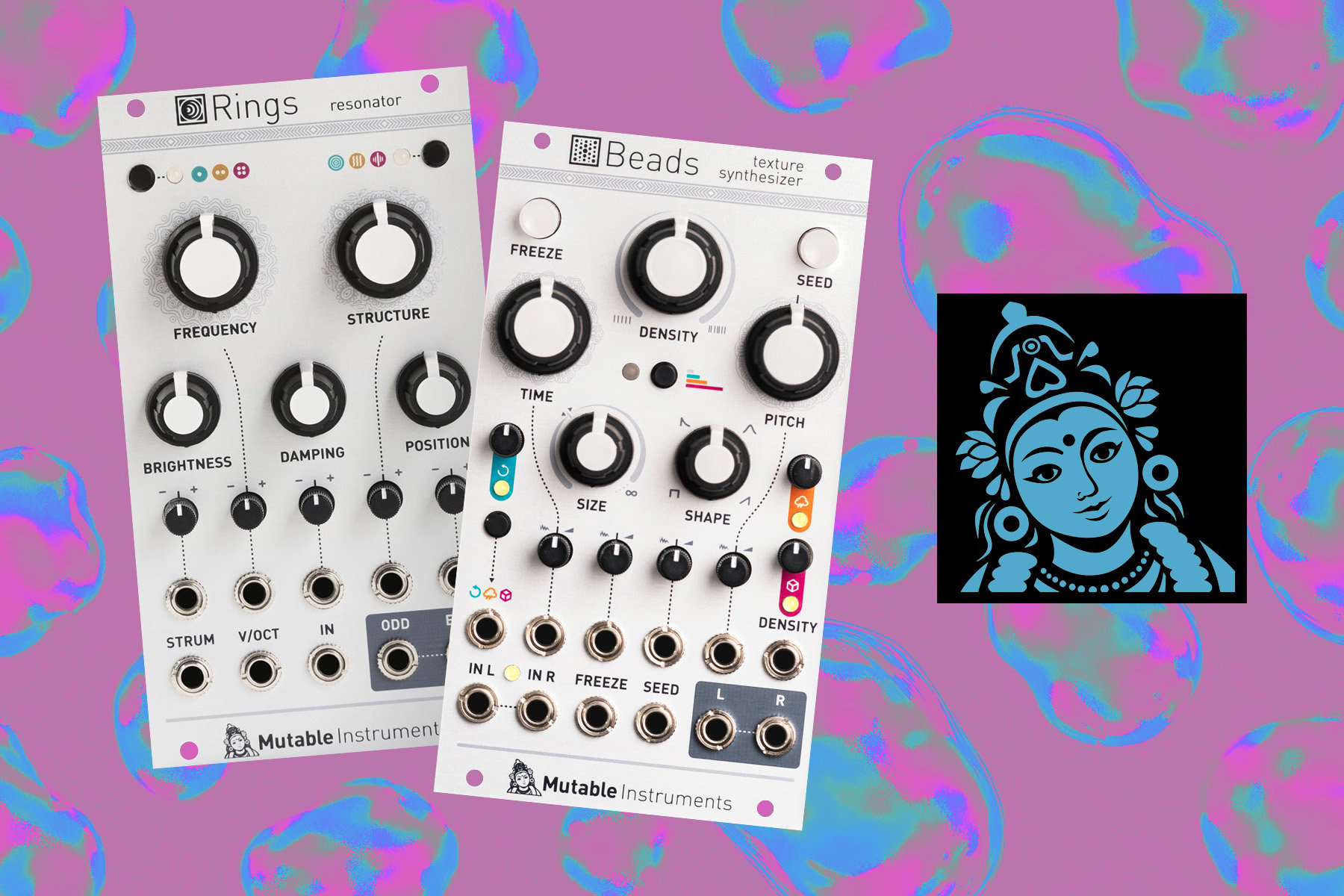Synthesizers were changing significantly in the 1980s. Analog instruments were still king during the early part of the decade, but as digital audio was creeping in to take their crown.
Analog synths shape their sounds through voltage-controlled oscillators, filters, and amplifiers—but at this time, significant effort was being placed into research into digital sound production. Though digital sound production had long been a part of academic computer music, it was becoming feasible to package digital sound generation into more compact, affordable hardware…and it was only a matter of time before the unique possibilities of digital sound synthesis would find their way into commercial products.
German musician, inventor, and innovator Wolfgang Palm was an early innovator who saw the value in creating commercial synthesizers that could operate based on different concepts from conventional analog synthesizers. So he put his focus into wavetable synthesis. Though this technique had its foundations in the world of computer music, it would eventually reach the masses thanks in large part to Palm's efforts.
The Birth of Wavetable Synthesizers
Wavetable synths like Serum and Vital are now very popular in the plugin world, but in the middle of the 1980s, the idea revolutionized the world of commercial electronic musical instruments.
Wavetable synthesis offers distinct sonic possibilities that analog instruments cannot easily achieve. Where analog synthesis typically uses voltage-controlled oscillators with relatively fixed waveshapes, wavetable synthesis uses digital waveforms, stored in digital memory and reproduced via digital-to-analog conversion processes.

[Above: a visual explanation of wavetable synthesis from the Waldorf Microwave user manual.]
Because wavetable oscillators are based on arbitrarily generated data, they don't need to follow the same rules as typical analog oscillators, which usually offer a complement of "standard," relatively simple waveshapes like saw waves, square waves, triangle waves, etc. Instead, you can work with any imaginable waveshape—and what's more, in most wavetable instruments, you can dynamically change the waveshape in real time, offering much greater control over the harmonic content and unlocking new expressive possibilities. By scrolling through different waveforms, users can create complex and evolving sounds. The sonic palette is wider, and nothing is off the…, well, table. The appeal of wavetable synths is their versatility and flexibility, which is one of the reasons they’re so popular in modern music production.
Palm’s research and innovation into this new type of synth was first realized with the Wavecomputer 360, released in 1978. It allowed users 30 different wavetables with 64 waves total.
In retrospect, it feels as if its design suffered some expected growing pains. The 360 lacked typical audio filtering, which could result in some thin, harsh sounds. But as Palm tried to address some of the design flaws of the Wavecomputer 360, he created the Wave synthesizer line and its expansion hardware—now iconic tools. This was an entire music production ecosystem, capable of some truly remarkable feats…so let's look at some of its various components, starting with the best-known: the PPG Wave.
PPG Wave
Like all revolutionary synthesizers, the intent behind the design and functionality of the PPG System centers around innovation and versatility. By focusing on wavetable synthesis, the PPG system broke free from the traditions established by the analog synths that dominated the market. The Wave creates complex and evolving sounds that significantly expanded what musicians could do with the instrument.

[Above: the PPG Wave 2.3; image via Perfect Circuit's archives.]
The Wave's expression was unparalleled, and there was a huge level of control over dynamics: allowing users to use the continuously-variable waveshape as a means of imparting expression or automated evolution into their sounds. It was tailored to be easy to use, with streamlined controls to minimize the complexity that plagued other early digital synthesizers. Let’s run down the different variations of PPG Wave synths and what sets them apart from each other.
After addressing the biggest issues with the design of the Wavecomputer 360, the Wave combines the digital sound engine that powers it with analog VCAs (voltage-controlled amplifiers) and VCFs (voltage-controlled filters). The Wave offers eight voices of polyphony, and the unconventional sliders-and-buttons control layout of the 360 were replaced by an LCD screen and knobs. A sequencer that captures wavetable changes and filtering in real time was added, making the Wave one of the first synths to offer this kind of programmability.
Three models of Wave were released over the course of the 1980s, each building on the features of previous models. The Wave 2 (c. 1981–1982) brought wavetable synthesis to the masses. Through a hybrid of digital oscillators and analog filtering, it offered the appeal and versatility of digital paired with the warmth of analog. It offered eight voices with one wavetable oscillator per voice, 8-bit resolution, a single modulation wheel, and CEM 3320 VCFs to sculpt the sounds. Through an expansion card, the voice count could be doubled to 16.
Wave 2.2 (c. 1982–1984) doubled the number of voices without the need for an expansion card, and doubled the per-voice oscillator count along with them. It retained the 8-bit resolution of the previous model. An additional modulation wheel offers further control over waveform shaping.
The Wave 2.2 utilizes SSM 2044 VCFs and a digital VCA was added. One of its biggest improvements was an interface redesign to offer easier, more expedient control.
The last model in the Wave line, the Wave 2.3 (c. 1984-1987), kept the same number of voices as the 2.2 and offered the most improvements yet. The resolution was increased to 12 bits, and the wavetable library and modulation effects expanded. The same VCFs used in the 2.2 stayed, but an 8-part multitimbrality function augmented what this impressive synth line was already capable of. What's more, these instruments were available with optional support for integrated wavetable editing, vector synthesis, and even sampling—a wild feat for the time (though this did require additional hardware—more on that in a bit).
The Wave has continued to fascinate, and it's still a sought-after instrument today. It has inspired plugins, imitation hardware, Eurorack modules, and much more. That said, let's take a look at some of the peripherals PPG offered to augment the Wave's possibilities.
PPG System Expansion Units
One of the most interesting design aspects of the PPG System are the optional peripherals that can be integrated with it.

All of the elements together make up the PPG Wave System, though many mistakenly refer to the standalone PPG synths by the same term. At the time, this music creation and sound manipulation ecosystem provided users a robust synthesizer suite that competed with more expensive, all-in-one models like CMI’s popular Fairlight.
Let’s explore these expansion units and how they augment the sound of this already impressive synthesizer family.
PRK Processor Keyboard
This “smart” keyboard controller added to the Wave System a 72-note, velocity-sensitive keyboard with weighted action keys. It primarily acted as a "master controller" for the PPG system—though it could also be used to store wavetables/samples for quick and easy loading on the Wave itself.

As a controller, it offered sequencing, keyboard splits, and MIDI output—making it a useful tool with the PPG ecosystem, as well as other gear.
EVU Expansion Voice Unit
The Expansion Voice Unit added eight additional voices to the Wave and Waveterm. Its eight channels have individual volume and pan controls, as well as individual outputs and a master volume. On the rear are MIDI and cassette interface I/O. It was, in effect, a Wave 2.3, sans keyboard.

The EVU was designed to load multitimbral samples and wavetables into memory. It was a huge boon to the 2.2 specifically, as that model had more restricted options for wavetable selection. At first, the PPG Communication Buss was the only way to integrate the EVU into the PPG System. Eventually, MIDI was added—and with that, it became much more standalone, basically acting as a rackmount version of the Wave 2.3.
HDU Hard Disk Unit
With the seemingly endless possibilities offered by the Wave system, somewhere to store the creations was needed. That’s exactly what this hard disk unit did, offering a more reliable and robust method of data storage than possible with floppy disks.

It offered 12 minutes of sampling time at 16-bit/44.1kHz playback and had MIDI synchronization. A useful time correction feature doesn’t affect pitch when speeding samples up or down. But perhaps the most appealing part of its design is its capabilities in the realm of real-time audio processing.
Digital effects can be applied to external audio, including echo and delay as well as modulation and unusual harmonization. This allows users to do all processing within the Wave System. The editor was ahead of its time, and a precursor to the way that modern DAWs function. It even offered file management features through the LCD display.
It wasn’t cheap though! Coming in at a staggering $16,000+ (the equivalent of over $40,000 today) the cost was prohibitive for most—but in retrospect, it was a great snapshot of where digital audio recording and processing was heading.
Waveterm
Likely the most interesting expansion unit for the PPG System is the Waveterm computer. This powerful, versatile accessory allowed for sampling, sequencing, and editing of wavetables or samples created by the user.

By specifying graph points or using samples it allows new waveshapes to be created. The new waveform(s) displayed on the CRT screen, but considering that it was released in 1982, it came with some limitations. It was only 8-bits with a small memory bank, though it did accept floppy disks (what’s more 80s than that?!). It used a dedicated chip for processing and added a lot of value to users looking for more sequencing capabilities.
The later Waveterm B improved specifications, allowing for 16-bit recording and more. The Waveterm is a deep device that transforms the capabilities of the Wave system as a whole—it really warrants a deep dive of its own, which hopefully we can offer in the future.
Popularity
Though it was a competitor of the now equally iconic Fairlight and Synclavier systems, the PPG system quickly set itself apart. Its different approach to generating and manipulating sounds was a welcome alternative to analog synths—and the system's essentially modular nature set it apart from other computer-centric synthesizer/production systems of the time.
With a streamlined interface, its user-friendly approach was a drastic difference to the cluttered and cumbersome interfaces of other synths at the time. Innovation was its foundation, and the PPG System became a favorite of all kinds of notable artists across different genres.
Rock bands like Rush, Styx, and Psychedelic Furs to pop artists like Thomas Dolby, Stevie Nicks, Hall & Oates, Tears for Fears, Robert Palmer, Depeche Mode, and Steve Winwood used it throughout their work in the '80s and early '90s.
It held appeal with more independent artists as well, which further proved that this new type of digital synthesis technique had a wide-reaching appeal…even if the technology still had some maturation to go through.
The Rise of Digital Synthesizers
Like we’ve gone over in our history of the Casio CZ and SK lines, digital synthesizer technology was advancing at a rapid pace during the course of the 1980s. A number of the most popular synths of all time came out during the various manufacturing runs of the PPG System. These included the industry-disrupting Yamaha DX7, the Korg DW-8000, Ensoniq ESQ-1, and the Sequential Prophet 2000.
Each of these had its own unique appeal, but they shared one thing in common: they were all much more affordable than the PPG System, or even the Wave alone. With so much competition for market share and the significant costs associated with research and development of new products, PPG officially shut down operations in 1987.
Post PPG System and Waldorf Music
Though the first era of their legacy came to an end in 1987, the German distributor for PPG—Waldorf Electronics—took the reins for hardware wavetable synthesizer manufacturing. Waldorf worked hand-in-hand with Wolfgang Palm to design and release new products like the Microwave and Wave, even though he was never an official Waldorf employee.
They took the underlying technology of the system and modified it and released new products over the next several decades. Some builds centered around the use of ASIC components, or so-called "application-specific integrated circuits," fabricated specifically for these types of synthesizers.
As the calendar turned to the late '90s and beyond, more advanced systems like DSP and audio plugin standards like VST became the lifeblood of the more modern units. But the secret was out, and a lot of other manufacturers saw the appeal wavetable synths offered. The competition only heated up.

[Above: the Waldorf Wave—a rare and powerful 1990s wavetable synthesizer.]
The ideology behind the Wave 2.3 was transformed into a sleeker, rackmount unit to create the Microwave in 1989 and the WAVE in 1993. 1997 saw the second version of the Microwave, based around digital signal processing and its offshoots XT and XTk.
PPG knew they were onto something—taking existing design ideas and pairing them with more advanced digital audio tech.
As plugins started taking over hardware as the primary type of signal processing in music production, plugins that emulate the original PPG Wave synths started popping up. Waldorf created their own officially-licensed versions with the Wave 2.V and 3.V.
The Wave 3.V plugin was far and away the most authentic on the market. It was developed specifically with Palm’s input and is an accurate simulation of the way the hardware filters and aliases of the waveforms behaved on the Wave 2.2 and 2.3 models.
PPG’s Legacy
It didn’t take long for other manufacturers to take the wavetable synth concept and run with it. From the hardware wavetable synths of the 80s to massively powerful plugins like Serum, Wolfgang Palm’s contributions to synthesizers and music technology overall stand the test of time. Considering how popular wavetable synths are today it’s interesting that the concept has been around for decades!
To say the PPG System was ahead of its time is an understatement. What started as a digital alternative to analog synthesizers blazed the trail for a new type of synthesis altogether. From the intuitive interface to the multiple Wave iterations and versatile expansion units, it left a lasting mark on the synthesizer landscape. Wavetable synths have such wide acclaim today; it’s impressive to realize just how revolutionary they were in the early '80s.
In step with other synthesizer pioneers like Robert Moog, the impact of Palm's instruments is still felt today. By pursuing his vision, he helped to shape one of the most popular forms of commercial synthesizers.









